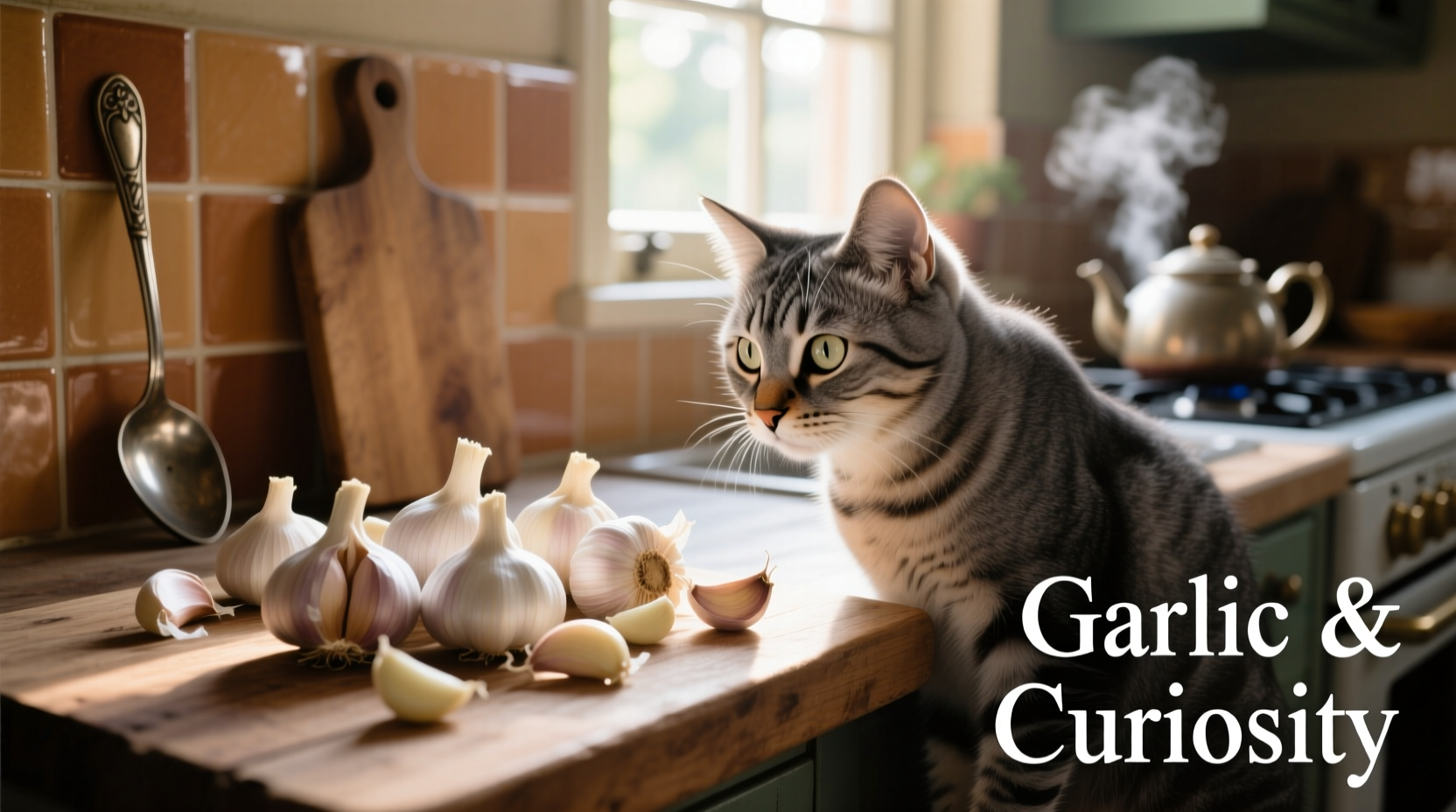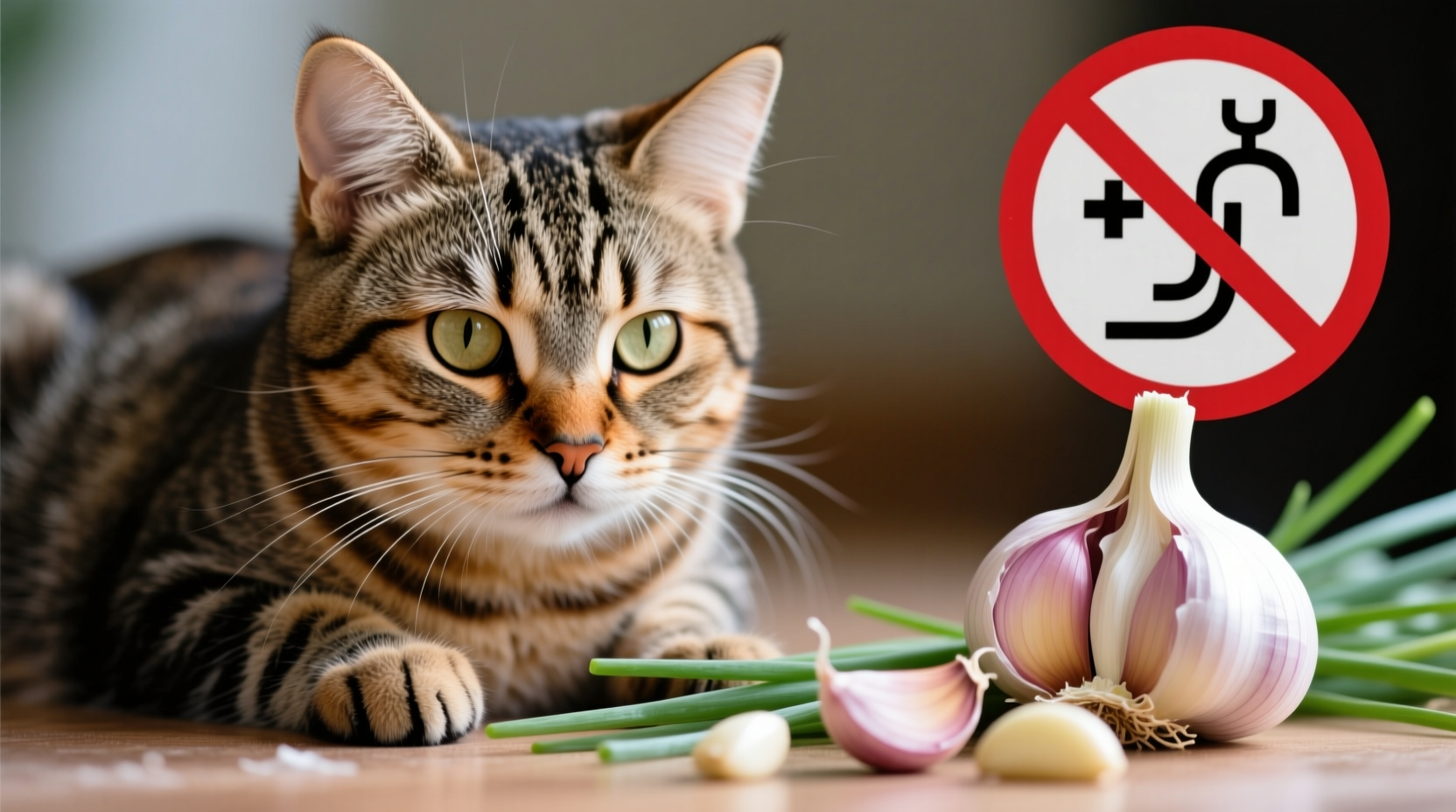As a pet owner, you might wonder whether that bit of garlic left on your plate could be a harmless treat for your curious feline. The unequivocal answer is no—garlic poses a serious health risk to cats. This article explains exactly why garlic is dangerous, how even minimal exposure can harm your cat, and what steps to take if accidental ingestion occurs.
Why Garlic Is Dangerous for Cats
Garlic belongs to the Allium family of plants, which includes onions, leeks, and chives. These contain compounds called N-propyl disulfide and other sulfur-containing substances that damage red blood cells in cats. Unlike humans, cats lack the metabolic pathway to process these compounds safely.
When a cat ingests garlic, these toxic compounds oxidize hemoglobin in red blood cells, forming Heinz bodies—abnormal structures that make red blood cells fragile and prone to rupture. This process leads to hemolytic anemia, where the body destroys red blood cells faster than it can produce them.
| Toxic Compound | Effect on Cats | Human Comparison |
|---|---|---|
| N-propyl disulfide | Destroys red blood cells causing anemia | Humans metabolize this compound safely |
| Thiosulphate | Causes oxidative damage to blood cells | Not toxic to humans at culinary levels |
| S-allyl cysteine sulfoxide | Triggers hemolysis (cell rupture) | Processed without issue in human digestion |
How Much Garlic Is Dangerous?
Many pet owners mistakenly believe that small amounts of garlic are safe. Research shows there is no safe threshold for garlic consumption in cats. The ASPCA Animal Poison Control Center confirms that even minimal exposure can trigger toxic effects.
A 2022 study published in the Journal of Feline Medicine and Surgery documented cases where cats developed clinical signs of toxicity after consuming as little as 5 grams of garlic per kilogram of body weight. For an average 5kg (11lb) cat, this equals just one-quarter of a typical garlic clove.
Symptoms of Garlic Toxicity in Cats
Symptoms typically appear 1-5 days after ingestion as red blood cells gradually deteriorate. Early signs include:
- Lethargy and weakness
- Pale or yellow-tinged gums
- Rapid breathing or heart rate
- Dark-colored urine (resembling cola)
- Vomiting and diarrhea
Without treatment, severe cases progress to collapse, difficulty breathing, and potentially death from insufficient oxygen delivery to vital organs.

What to Do If Your Cat Ate Garlic
If you suspect your cat has consumed garlic, follow these critical steps:
- Contact your veterinarian immediately—time is critical for effective treatment
- Note the amount and time of ingestion if possible
- Do not induce vomiting without professional guidance
- Bring the garlic source to the clinic for identification
Veterinary treatment typically involves intravenous fluids, oxygen therapy, and in severe cases, blood transfusions. Early intervention significantly improves recovery outcomes.
Common Misconceptions About Garlic and Cats
Despite widespread misinformation, these beliefs about garlic and cats are dangerous myths:
- "Cooked garlic is safe"—Cooking doesn't eliminate toxic compounds
- "Small amounts boost immunity"—No scientific evidence supports this claim
- "Garlic prevents fleas"—Topical application causes skin irritation and ingestion risks
The American Veterinary Medical Association explicitly states that garlic has no therapeutic benefits for cats and should never be used as a home remedy.
Safe Flavor Alternatives for Cats
If you want to enhance your cat's food, these vet-approved options provide safe flavor without risk:
- Catnip (in moderation)
- Freeze-dried meat toppers
- Brewer's yeast (consult your vet first)
- Low-sodium chicken broth (without onions or garlic)
Always introduce new foods gradually and monitor for adverse reactions. When in doubt, consult your veterinarian before adding anything to your cat's diet.
Preventing Garlic Exposure
Protect your cat by implementing these safety measures:
- Store garlic and onions in closed cabinets
- Dispose of food scraps securely
- Avoid sharing human food containing Allium plants
- Read pet food labels carefully for hidden garlic derivatives
- Educate family members about the dangers
Remember that garlic powder and liquid garlic extracts are more concentrated and therefore more dangerous than fresh garlic. Even foods prepared with garlic residue can pose risks.











 浙公网安备
33010002000092号
浙公网安备
33010002000092号 浙B2-20120091-4
浙B2-20120091-4